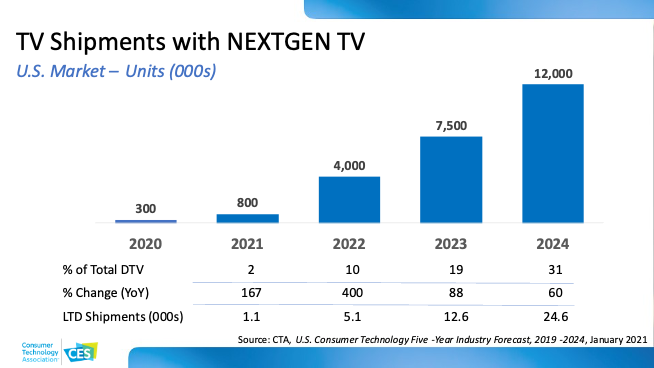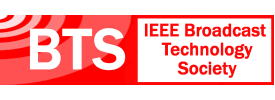- About
- Members
- Sponsors
- Subcommittees
- About Our Subcommittees
- Technology Group 3
- Implementation Team 1 – Advanced Emergency Information
- Implementation Team 2 – India
- Implementation Team 3 – ATSC 3.0 Conformance
- Implementation Team 4 – Brazil
- Implementation Team 5 – Tower Network
- Implementation Team 7 – Caribbean
- Implementation Team 8 – Automotive
- Planning Team 4 – Future Broadcast Ecosystem Technologies
- Planning Team 5 – Automotive Applications
- Planning Team 6 – Global Recognition of ATSC 3.0
- Planning Team 9 – Sustainability
- Technical Documents
- News
- Events
- Spotlight ATSC 3.0
- Contact Us
- Member Login
- Member Meetings
- Advanced Search
Search Site
Member Links
- About
- Members
- Sponsors
- Subcommittees
- About Our Subcommittees
- Technology Group 3
- Implementation Team 1 – Advanced Emergency Information
- Implementation Team 2 – India
- Implementation Team 3 – ATSC 3.0 Conformance
- Implementation Team 4 – Brazil
- Implementation Team 5 – Tower Network
- Implementation Team 7 – Caribbean
- Implementation Team 8 – Automotive
- Planning Team 4 – Future Broadcast Ecosystem Technologies
- Planning Team 5 – Automotive Applications
- Planning Team 6 – Global Recognition of ATSC 3.0
- Planning Team 9 – Sustainability
- Technical Documents
- News
- Events
- Spotlight ATSC 3.0
- Contact Us
- Member Login
- Member Meetings
- Advanced Search
CES 2021 Rewind
Posted on February 1, 2021 in ATSC News
By BRIAN MARKWALTER
Senior Vice President, Technology & Research, Consumer Technology Association
Two years ago, my post-CES® article in this newsletter began, “CES 2019 was another one for the record books…” – and so it is again this year, only in ways we never expected.
CES 2021 made history as the largest digital tech event ever. Nearly 2000 companies showcased innovation that reflected the accelerated development and adoption of technology over the past year. Keynotes from Verizon, General Motors, Best Buy, Walmart, AMD, Microsoft and others laid out a future with incredibly immersive, 5G-connected experiences; commitments to a sustainable future and zero-emission vehicles; re-invented shopping experiences with renewed focus on safety and convenience; and cloud computing with security and privacy top of mind. Attendees from more than 150 countries joined CES 2021 to enjoy more than 100 hours of conference programming, which is still available through Feb. 15, 2021 at CES.tech.
ATSC itself was an exhibitor at CES, and Madeleine Noland addressed how ATSC 3.0 will deliver advanced TV viewing experiences in the conference session “Next Generation Television in Focus.” ATSC also hosted engaging panel sessions on ATSC.org covering what consumers can expect in the near future with ATSC 3.0 and ways that ATSC 3.0 can improve distance education. CTA participated in the consumer-focused panel and shared its latest projections on the rapid ramp-up of NEXTGEN TV (ATSC 3.0) sales, including 167% YoY growth this year, then breaking out in 2022 with 400% growth and expected sales of 4 million NEXTGEN TVs. By 2024, CTA expects the NEXTGEN TV feature to outstrip 8K Ultra HD sales.
Innovation in display technology did not slow down during the pandemic. At CES 2021, TV manufacturers showcased incredible improvements from the very biggest TVs down to the most value-focused models. One of the hot technologies that is guaranteed to boost dynamic range is the use of “mini-LED” backlighting, with up to 30,000 tiny LEDs providing ultimate zone control in backlighting to maximize contrast and avoid flaring from bright pixels to nearby dark pixels. We see this technology in LG’s QNED TV lineup and Samsung’s Neo QLED series. TV companies are combining “mini-LED” backlighting with Quantum Dots to improve color volume up to 100% of DCI-P3.


OLED TVs from Sony and LG are also improving, with peak brightness hitting 1000 nits on some models and screen sizes up to 83 inches. Finally, the brains behind the pixels are getting smarter. Sony’s Cognitive Processor XR is a perfect example of how companies are making extensive use of AI for video processing, in addition to AI for voice assistants and content recommendations now common in many TVs.

CES 2021 wasn’t the only record breaker. During the pandemic, U.S. consumers bought a record number of TVs – more than 46 million. That represents 13% growth over 2019’s more typical 41 million units purchased. Consumers are frequently pairing over-the-air reception with subscriptions to video streaming services, which is driving an expected 15% jump in streaming revenue this year.
The television industry never ceases re-inventing itself. It’s exciting to be a part of this magical industry.
Long-time ATSC board member Brian Markwalter is Senior VP at the Consumer Technology Association, which owns and operates CES. Markwalter serves as Vice Chairman of the ATSC Board of Directors.
Posted in ATSC News
News Categories
News Archives
Subscribe
Subscribe to The Standard, our monthly newsletter. Learn More
Join ATSC
ATSC is a membership organization with both voting and observer categories. Voting members include corporations, nonprofit organizations, and government entities, and they participate actively in the work of ATSC. Observers are individuals or entities not eligible to be a voting member.
Subscribe to our Newsletter
Subscribe to The Standard, our monthly newsletter, to stay up-to-date with ATSC news and events around the world.
Site Links
Contact Us
Advanced Television Systems Committee, Inc.
1300 I Street NW, Suite 400E
Washington, DC 20005
Do you have questions about ATSC?
About ATSC
The Advanced Television Systems Committee, Inc., is an international, non-profit organization developing voluntary standards and recommended practices for digital terrestrial broadcasting. ATSC member organizations represent the broadcast, broadcast equipment, motion picture, consumer electronics, computer, cable, satellite, and semiconductor industries. ATSC also develops digital terrestrial broadcasting implementation strategies and supports educational activities on ATSC standards.
© 2024 ATSC











































